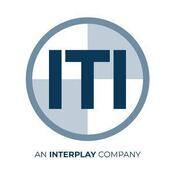Lift Planning Online: 4th Rigging Engineering Course Available from ITI
The importance of lift planning to the lifting, rigging, and hoisting community has never been in question. As individual load handling situations move along spectrum, from standard lifts to critical lifts, proper lift planning and best practices become even more essential to success. The latest course released in the Fundamentals of Rigging Engineering Program, RE-150 Lift Planning, provides students with an introduction to lift planning, addresses building lift plans, and finally deals with executing lift plans. Other released courses in the Rigging Engineering Program are: RE-110, RE-120, and RE-130.
The ASME
The (American Society of Mechanical Engineers) P30 Lift Planning Standard for Load Handling Activities is generally recognized as the gold standard for lift planning. Instruction in RE-150 Lift Planning comes from four of the most experienced and respected minds in the world when it comes to lifting planning, many serving on national standards writing committees dealing with load handling and lift planning.
- Keith Anderson, Chief Rigging Engineer, Bechtel, Bill Rigot, Former Chief Engineer, USS
- NIMITZ Aircraft Carrier
- Jim Wiethorn, PE, Principal & Chairman, Haag Engineering
- Mike Parnell, Technical Director & CEO, ITI
Module 1: Introduction to Lift Planning
The first module in this course provides an in-depth overview of lift planning. To start, eight key considerations of lift planning best practices are identified. The next series of lessons focuses on risk and risk analysis of what is undoubtedly a high-risk operation. A significant and unique learning objective in module one of RE-150 Lift Planning is the Human Performance Management Section. This series of lectures delivered by Human Performance Practitioner, Bill Rigot, addresses the often-neglected area of understanding human error, and the subsequent effect on lift planning. Mr. Rigot goes on to take a look at High-Performing Organizations, breaking down exactly what makes them successful.
Module 2: Building Lift Plans
All the major considerations when it comes to building a lift plan are the focus of the second course module. ITI's Technical Director provides a number of lectures and reading assignments revolving around building a lift plan, students get the opportunity to “sit in” on a lift-planning meeting and work through multiple lift planning workshops in module two.
Module 3: Executing Lift Plans
The final module of this course deals with the execution of a lift plan. Jim Wiethorn of Haag Engineering is the lead lecturer in this module. Mr. Wiethorn takes the unique perspective of analyzing crane accidents from over the past 30 years to demonstrate and identify how gaps in the lift planning process ultimately contributed to the accidents. Many of the examples addressed in the session come from Mr. Wiethorn’s recently released book Crane Accidents: Causes & Trends, which takes a comprehensive survey of over 500 crane accidents from 1983-2013. Crane Accidents: Causes & Trends is available for purchase from the ITI Bookstore.
Test Drive the Program
Fundamentals of Rigging Engineering, the world’s ONLY rigging engineering training program, offers a chance to demo the unique learning experience. Included in the demo are outlines of each course lesson and lecture samples. Including a lecture from RE-150 Lift Planning.
The Fundamentals of Rigging Engineering Program has five required courses, which are available online through ITI's Learning Management System. To complete the program, students must select two of the seven available elective courses. Three of these electives are available online and the remaining four offer hands-on, instructor led training opportunities.
For more information visit riggingengineering.com or call 800.727.6355.




COMMENTS